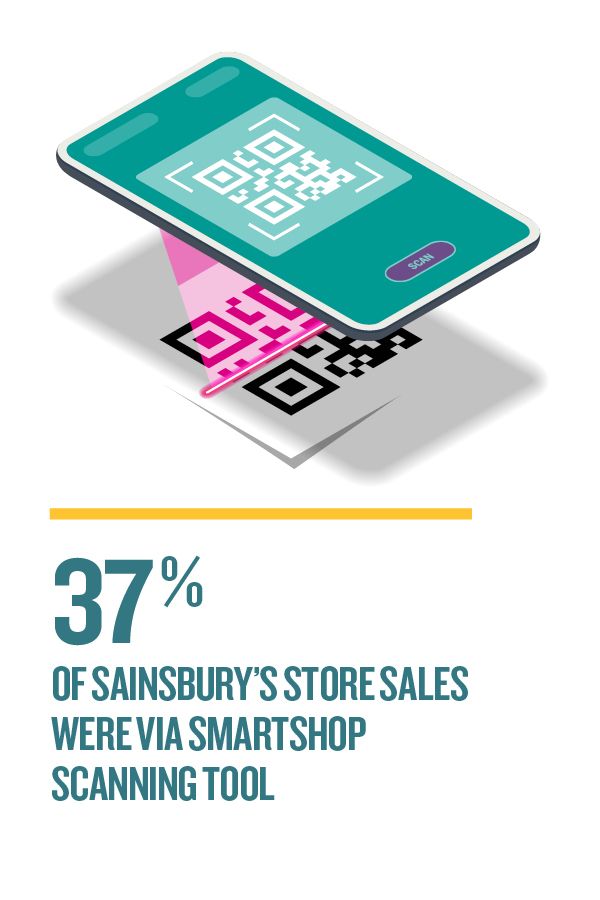
The past 12 months have been characterised by lightning-fast digital transformation as retailers and brands pivoted their business models to meet the challenges of the coronavirus crisis and serve a rapidly changing consumer.
With the vaccine rollout now happening at speed, there is an end in sight. But consumers won’t simply go back to what they were doing before – and retailers need to be ready for that.
So what does this new consumer look like, what makes them tick and what will drive them to spend? How can retailers win their loyalty in a largely subdued market and how will this shape the future of customer experience?
These were questions RWRC, the home of Retail Week and World Retail Congress, teamed up with customer services and business process outsourcing provider, Arvato CRM Solutions UK to answer in CX Decoded: How the UK’s top multichannel retailers are investing to win consumer spend.
The full report features in-depth interviews with five retailers innovating in customer experience: Kingfisher, Hotel Chocolat, QVC, Waterstones and Seasalt.
Here we crystallise the learnings from CX Decoded into five key steps to create a first-class customer experience proposition in order to drive sales and profits in 2021 and beyond.
Stores are unlikely to go anywhere – that was the consensus among the retailers we spoke to. However, they agreed that the consumer has changed. Perhaps forever.
The biggest shift, clearly, has been towards digital. Figures from the Office for National Statistics reveal that online sales as a proportion of total retail sales hit an all-time high of 36.2% in November 2020, settling back down to 31.3% in December. To put that into context, in January 2020 that figure stood at 20.2%.
Swathes of consumers who would previously have opted to only shop in stores are now digitally literate, awakened to the benefits of shopping online.
So retailers need to scale their online businesses with the right people and skills in place, and their websites optimised for both desktop and mobile – the latter ended 2020 with an increase in sales of 73%.
Social channels will also need to be incorporated, so that retailers are speaking to customers in the digital spaces they are spending their time in.

A greater number of consumers may now have become used to shopping online – especially older demographics – but stores are still going to have a vital role to play.
In fact, in terms of online sales, industry association IMRG reports that multichannel retailers outperformed their pureplay rivals, with ecommerce sales up 57% vs 9.1%, respectively, for the full 2020 year.
Customers will inevitably return to high streets around the country, but when they do stores will need to appeal to two very different camps: those searching for unbeatable prices and those looking for differentiated experience, whether that be a sense of ‘community’, ‘exclusivity’ or retailers and brands with ‘purpose’ and green credentials.
Stores will act as physical brand hubs and need to be closely integrated with digital channels, with store associates armed with the data insight to serve customers that will likely have begun their shopping journey in other channels.
Retailers that offer the best customer experience across all channels will be the ones that will win.
One of the areas that has seen the most innovation over the past year is customer service. With consumers unable to even enter stores for many months, retailers brought the expertise of store associates into customers’ homes virtually.
John Lewis launched a virtual personal shopping service using Zoom, which allowed customers to book 30-minute appointments and have products delivered to their home or via click and collect when possible.
Meanwhile, Currys PC World had already been experimenting with live video chat before 2020 via a pilot with electricals supplier HP, whereby customers browsing the brand’s products could start a live video feed with a member of staff in store.
This trend extends beyond virtual appointments with store associates. Contact centres are also set to play a central role in this new world in which customers expect the option of remote service.
Crucially, however, customer service agents need to be technologically empowered to help customers in a channel-agnostic way, able to carry the customer journey across multiple platforms, from social channels through to the retail website, face-to-face and on the phone. This will, of course, also require in-depth product and service training.
Meanwhile, in the background, AI-powered chatbots will serve simpler and routine enquiries, allowing retailers’ human customer service agents to spend more time with customers.

Delivery has long been a key battleground in retail. Often it is the last touchpoint a consumer has with a brand and one that makes – and leaves – the biggest impression.
Getting it right is crucial. In 2020 retailers innovated in this area to deliver on expectations and partnerships played a key role.
M&S launched grocery delivery on the Deliveroo app in late March, while in July Asda unveiled a trial home-delivery partnership with Uber Eats, which offers customers in Birmingham and Leeds delivery of a selection of grocery essentials in as little as 30 minutes.
Meanwhile, John Lewis announced it was extending its click-and-collect delivery and returns partnership with the Co-op to make the service available in more than 500 Co-op stores.
None of this is possible, however, without a clear, 360 view of the customer, stock and carriers.
With retailers facing greater network complexity and under greater pressure to offer a seamless service across channels, they will need to improve their analytical capabilities to ensure effective decision making and strong execution.
AI or machine learning can help retailers deliver the real-time visibility of products, people and customer activity so that they and their partners can serve customers in the most efficient way and to the highest standard. It also means many decisions and services can be automated, freeing up employees across the business to focus on more complex or valuable pursuits.
What is clear is that investment in data management is crucial, with widespread moves across the industry to do just this. This will be the key step that underpins the success of retailers’ multichannel strategies.
Want to find out more? Register to read the full report, CX Decoded: How the UK’s top multichannel retailers are investing to win consumer spend
Five strategies to drive spend with winning customer experience
Produced by James Knowles, Rebecca Dyer and Sam Millard, in association with Arvato CRM Solutions UK






















